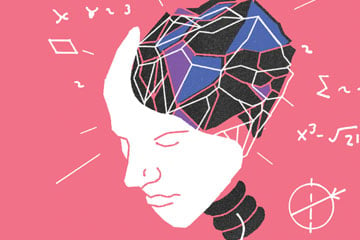Demand for AI patents is growing exponentially as the pace of innovation accelerates. In October, Saudi Arabia became the first country in the world to grant citizenship to a robot.

Demand for AI patents is growing exponentially as the pace of innovation accelerates.
In October, Saudi Arabia became the first country in the world to grant citizenship to a robot. “Sophia” was created by Hanson Robotics in Hong Kong and featured at the Future Investment Initiative event in Riyadh that month, where her citizenship was awarded. The following month, Sophia was named the United Nations Development Programme’s inaugural Innovation Champion, and the first non-human to be given a United Nations title. She can follow faces, sustain eye contact, recognize individuals and answer questions. By January she had learned to walk.
Sophia may be on the cutting edge of artificial intelligence, but the development of Sophia, and other developments in artificial intelligence and machine learning, also point to the challenges and realities of patenting AI.
“In our current system, there’s no way to recognize a non-person [such as Sophia] as an author or inventor, but in the future there could be,” says Stephen Martin, a partner, patent and trademark agent at Ridout & Maybee LLP in Toronto. “Star Trek-like ethical and legal questions could come into play . . . in 10 to 15 years.”
The greatest challenge for the future, he says, “is how we’ll start to move from fit-to-task solutions,” such as voice recognition and image analysis, “to more general-
purpose AI systems” that simulate human activity, such as an automated chat-bot that will dynamically pose and respond to questions from a user and “which are themselves starting to create inventions. . . .
“The more you get away from very specific applications . . . it gets much more challenging because you’re trying to patent something more akin to human mental activity,” says Martin.
The challenges of patenting
AI is a “hot technology” and significant breakthroughs in it are underway, says Isis Caulder, a partner, patent and trademark agent at Bereskin & Parr LLP in Toronto. A number of high-profile technology companies such as IBM, Google, Amazon, Microsoft, Samsung and AT&T are developing novel AI algorithms at a breakneck speed, she notes, and many other technology companies are harnessing AI specifically to make their existing products better and more useable and intuitive: for example, self-driving cars, household robots and image recognition.
“What is interesting from a patenting point of view is that AI is generating new technical problems to be solved, and these technical solutions are fertile ground for patenting,” she says. The U.S. Patent and Trademark Office is issuing “an exponentially growing number of patents,” mostly to high-profile technology companies like those mentioned above, that are developing AI-related algorithms.
As with any other invention, an AI or software-based invention must be new, useful and non-obvious in order to be patentable, says Caulder. “The fourth rule is subject matter: Is it too abstract or is it something concrete enough to be patentable? It must be applied enough and crystallized enough to be patentable subject matter.”
The importance of showing the technicality of the invention in the patent application is key, IP lawyers acknowledge. The more technical the problem and solution that’s being addressed by the patent application appears to be, the greater the likelihood that the Canadian Intellectual Property Office will conclude that the AI-related invention should be eligible for a patent, says Matthew Zischka, partner in Smart & Biggar/Fetherstonhaugh’s Toronto office.
“The applicant has to convince the [patent] office that the computer is necessary or substantial for solving the particular problem that’s being addressed by the invention,” Zischka says. “The patent office is [now] looking more carefully at applications to ensure that computer-implemented inventions aren’t mere schemes, formulas or business methods, but that they amount to more technical advances in the computer space.”
Depending on the nature of the machine-learning algorithm, the patent office might determine that it amounts to a mere mathematical formula rather than an invention, he says. Alternatively, the office could conclude that the computer-implemented invention is a computer-implemented “business scheme” and, therefore, not patentable. At the same time, the patent office is open to granting patents for machine-learning inventions, he says.
In 2014, the United States Supreme Court released its decision in Alice Corp. v. CLS Bank International, which held that a computer implementation of an abstract idea, which is not itself eligible for a patent, does not by itself transform that idea into something that is patent-eligible.
“In the U.S. in particular now, if an examiner or a court can characterize an invention as being an application of known mathematical algorithms or mathematical operations, you may not be able to get a patent,” says Roch Ripley, partner and head of the Vancouver Intellectual Property Department of Gowling WLG in Vancouver.
“And if you get a patent, the courts have been invalidating . . . software patents generally, at much higher rates. That’s a big problem.”
Europe used to be a jurisdiction in which it was more difficult to get a software patent because the courts “applied a technical-effect test,” Ripley says. “Did your invention result in a technical effect?” Now, he says, the European test is easier to satisfy than the American one.
Under the subject matter framework laid out by the U.S. Supreme Court in Alice, courts have been denied patent protection and invalidated patents, Caulder agrees, for software-implemented inventions on the basis that they are directed to a law of nature, natural phenomenon or an abstract idea and that the claims do not recite “significantly more.” However, she adds, a number of Federal Circuit cases following Alice have provided an avenue to address concerns over patent rejections.
Zischka calls the Canadian patent office approach “a little different.” In the Alice decision, he says, the U.S. Supreme Court applied a four-step test that was difficult to meet. But Canada’s approach is to look at the claim that’s presented in the patent application “as a whole. . . . Does the solution require tangible computer elements? If it does, they generally consider that the claim is patent-eligible.”
Market and enforceability
Ridout & Maybee’s Martin cites infringement detectability as a significant factor in patent protection. Data services are now central to our economy, and AI is beginning to move in on that, he says. “Data sensors are becoming omnipresent. Most patent agents have to be aware of this technology” as it develops in every industry.
The best patents are the ones that will be infringed upon by competitors and are detectable, Martin points out.
There are administrative procedures that have been introduced since 2013 called post-grant review and inter partes review that give alleged infringers avenues to invalidate patents, Ripley says. If a case for patent infringement goes to court, defendants can also try to invalidate a patent using a summary procedure on the basis that it’s directed at an ineligible subject matter: an abstract idea. Procedures available to make a summary judgment change “the economic consideration,” he notes.
“When we draft [patent applications] now,” says Ripley, “we’re careful to include a lot of technical detail, because if you can really establish that the invention results in technical benefits, then you’ve got a much better chance of surviving any invalidity challenge.”
Advising prospective patent holders
The patent application presented before the Canadian patent office can’t read like a sales document but like a technical document providing some sort of solution to a problem that’s technical in nature, Zischka says.
“We impress on [clients] ‘we won’t start working on a patent application for you unless there’s real technology there,’” says Caulder. “You want to see if what you’re building is creating a useful, concrete and tangible result. What is the result of the machine you’ve built? AI or machine learning involves a training model, developing and then running it and showing results.”
Canada is a hub of AI activity, but the valuable patents and intellectual property will come from the use of AI to solve a specific commercial need, Martin says. He also advises his clients to imagine how they would feel if a competitor applied to patent an invention similar to one they were developing. Hopeful patent holders should “get things filed as soon as possible, before technology moves on and you get leapfrogged.”
“I try to really dig into the details,” says Ripley. “You want to be careful not to just abstract the invention at a black-box level if you can avoid it. The more low-level discussions you can include, I think, the better for the purposes of validity.”
The overall message of patenting AI, he adds, is that “it’s gotten more difficult over the last few years, and you need to take more care in drafting a solid application. That’s how I see it.”










